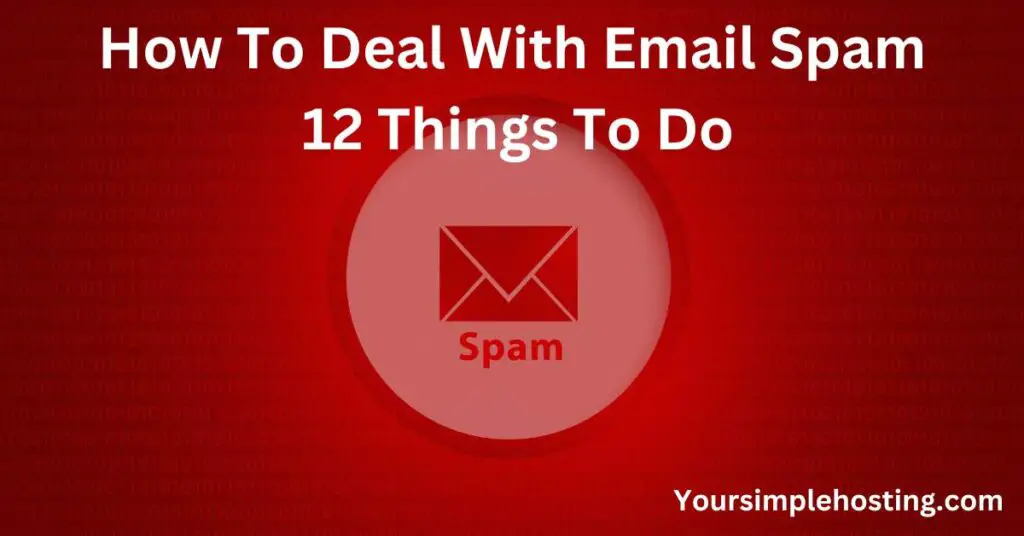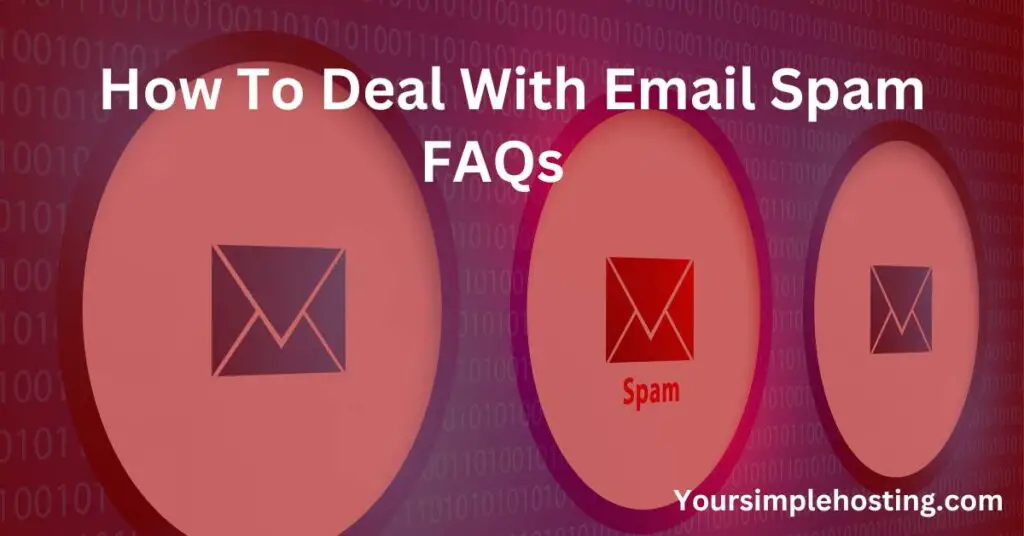The constant influx of spam emails in our inboxes can be irritating. However, it’s also a significant security risk. Spam emails often contain harmful links or attachments that can compromise sensitive information and data. Spam emails make up 47.3% of emails received.
Here is a list of things how you can deal with email spam:
- Use a spam filter.
- Unsubscribe from unwanted emails.
- Avoid sharing your email address.
- Mark email as Spam.
- Use disposable email addresses.
In this article, I’ll provide actionable steps to deal with email spam and protect yourself and your information.

Table of Contents
How to Deal With Email Spam: 12 Effective Methods
Email spam can be a frustrating and time-consuming issue for many people. Here’s how to deal with email spam:
1. Use a Spam Filter
Most email services provide spam filters that can automatically detect and divert spam emails to a separate folder. Regularly check the spam folder to ensure that legitimate emails are not being filtered out.
2. Unsubscribe From Unwanted Emails
You probably get spam emails from companies or individuals who obtained your email address through online subscriptions.
Look for the “Unsubscribe” link in the email and remove yourself from their mailing list.
Note: If unsure if the “Unsubscribe” link is safe to click, delete the email.
3. Avoid Sharing Your Email Address
Be cautious about providing your email address on online forms and websites. For example, use a separate email address for online purchases or subscriptions to avoid spam emails in your primary inbox.
4. Use Disposable Email Addresses
Use disposable email address services to create temporary email addresses for one-time use.
5. Don’t Respond or Click on Suspicious Emails
Don’t respond to or click on links in suspicious emails, as this can confirm to spammers that your email address is active and increase the amount of Spam you receive.
6. Use Email Authentication
Many email services provide authentication methods such as SPF, DKIM, and DMARC to verify the authenticity of emails and reduce Spam.
7. Use Third-Party Spam Filtering Tools
There are various third-party spam filtering tools available that can help you manage your email and reduce Spam.
8. Mark Emails as Spam
Most email services allow you to mark an email as Spam. By doing so, the email provider will use this information to improve their spam filters and reduce the spam emails you receive.
9. Use Anti-Virus Software
Some anti-virus software includes spam filters that block malicious emails before they reach your inbox.
10. Use a Safelist
You can create a safelist of trusted email addresses that will always be allowed into your inbox, reducing the risk of important emails being filtered into the spam folder.
11. Be Cautious With Your Email on Social Media
Avoid posting your email address publicly on social media platforms or other public websites, as this can increase the risk of receiving spam emails.
12. Use a Separate Email for Personal and Professional Use
Consider using one email address for personal communication and another for professional purposes. This can help you better manage your email and reduce the risk of receiving Spam on your professional account.

FAQs
How Do I Stop Receiving Spam Emails?
To stop receiving spam emails, you can use a spam filter, unsubscribe from unwanted emails, avoid sharing your email address, use disposable email addresses, and avoid responding to or clicking on suspicious emails.
Why Am I Suddenly Getting Lots of Spam Emails?
There could be various reasons you suddenly get lots of spam emails. One possibility is that spammers may have compromised or obtained your email address.
Or you may have unknowingly subscribed to a mailing list or shared your email address on a website.
Is it Better to Block or Delete Spam?
It’s better to delete spam emails rather than block them. This is because spammers often use different email addresses and domains to send Spam, and blocking them may be ineffective in the long term.
Is It Safe to Unsubscribe From Spam Emails?
It’s generally safe to unsubscribe from spam emails, but it’s essential to be cautious and only unsubscribe from legitimate and trusted sources. Some spammers may use unsubscribe links to confirm that your email address is active and send more Spam.
Should I Just Ignore Spam Emails?
Ignoring spam emails isn’t recommended because it can clutter your inbox, make it difficult to find important emails, and potentially expose you to security risks.
Why Should You Delete Spam Emails?
Deleting spam emails is important to keep your inbox organized, reduce the risk of falling for phishing scams, and avoid exposing yourself to malware or other security threats that may be embedded in spam emails.
Is it Normal to Get Spam Emails Every Day?
It’s common to receive spam emails daily, as spammers use automated tools to send out large quantities of unsolicited emails to many people.
However, the frequency of spam emails may vary depending on various factors, such as how frequently you share your email address online
Should I be Worried if I Get Spam Emails?
While receiving spam emails isn’t necessarily a cause for immediate concern, you should still be cautious and take steps to protect yourself.
Spam emails can be annoying and time-consuming to deal with, and they may also contain malware or phishing links that can compromise your security if clicked on.
It’s important to regularly review your email inbox and spam folder, delete suspicious emails, and report any phishing or spam emails to your email provider.
Additionally, you can take steps to reduce the amount of Spam you receive, such as using a spam filter and being cautious about sharing your email address online.
How Long Does Spam Last in Email?
Most email providers have a limit on the amount of storage space allocated for each email account, old emails, including Spam, may be automatically deleted after a particular time to make space for new emails.
In some cases, spam emails may also be automatically deleted after a certain period, depending on the settings of your spam filter or email client.
Conclusion
In conclusion, dealing with email spam requires a combination of vigilance, prevention, and action.
By following the steps above, you can effectively decrease the spam emails you receive and minimize the risk of cyber threats.
Always be cautious and skeptical of suspicious emails, and take quick action to protect your information if necessary.
With these tips, you can take control of your inbox and safeguard your online security.

Leave a Reply